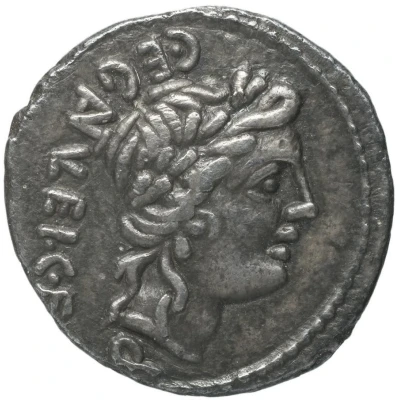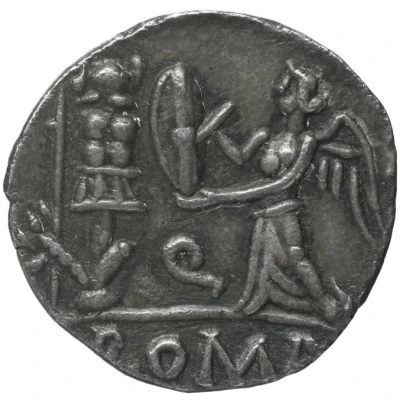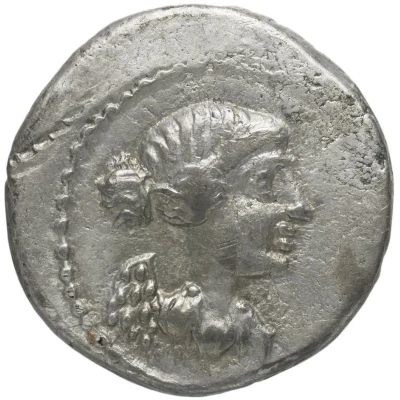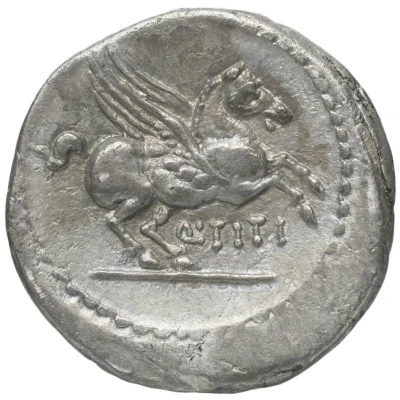
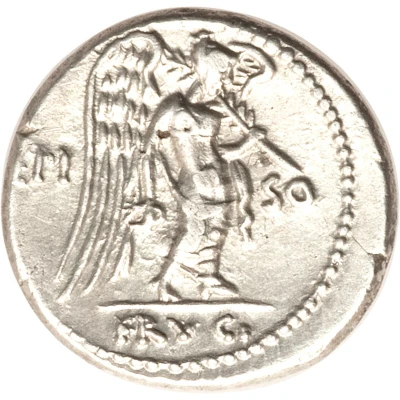

Quinarius Calpurnia: Lucius Calpurnius Piso Frugi; L PISO FRVGI 90 BC
90 BC year| Silver | 1.72 g | 14 mm |
| Issuer | Rome › Roman Republic (509 BC - 27 BC) |
|---|---|
| Period | Republic (509 BC - 27 BC) |
| Type | Standard circulation coin |
| Year | 90 BC |
| Value | Quinarius (½) |
| Currency | Denarius of 16 Asses (141 – 27 BC) |
| Composition | Silver |
| Weight | 1.72 g |
| Diameter | 14 mm |
| Shape | Round (irregular) |
| Technique | Hammered |
| Orientation | Variable alignment ↺ |
| Demonetized | Yes |
| Updated | 2024-10-06 |
| Numista | N#66971 |
|---|---|
| Rarity index | 95% |
Reverse
Victory, winged and draped, standing right, holding wreath in right hand and palm in left hand; sometimes a sword and a spear in hands instead.
Moneyer mark in fields and in exergue.
Script: Latin
Lettering:
L • PI | SO
FRVGI
Unabridged legend: Lucius [Calpurnius] Piso Frugi
Comment
The gens Calpurnia was a plebeian family at Rome, which appears in history during the third century B.C. The first of the gens to obtain the consulship was Gaius Calpurnius Piso in 180 B.C., but from this time their consulships were very frequent, and the family of the Pisones became one of the most illustrious in the Roman state. Two important pieces of Republican legislation, the lex Calpurnia of 149 BC and lex Acilia Calpurnia of 67 BC were passed by members of the gens.
Interesting fact
The Quinarius coin was used to pay the Roman soldiers during the Roman Republic. It was a small silver coin that was equivalent to half of a denarius, which was the standard unit of payment for soldiers. The Quinarius coin was introduced during the reign of Julius Caesar and was used until the fall of the Roman Republic. It's interesting to note that the coin's design featured the image of a warrior, which symbolized the military might of the Roman Empire.
